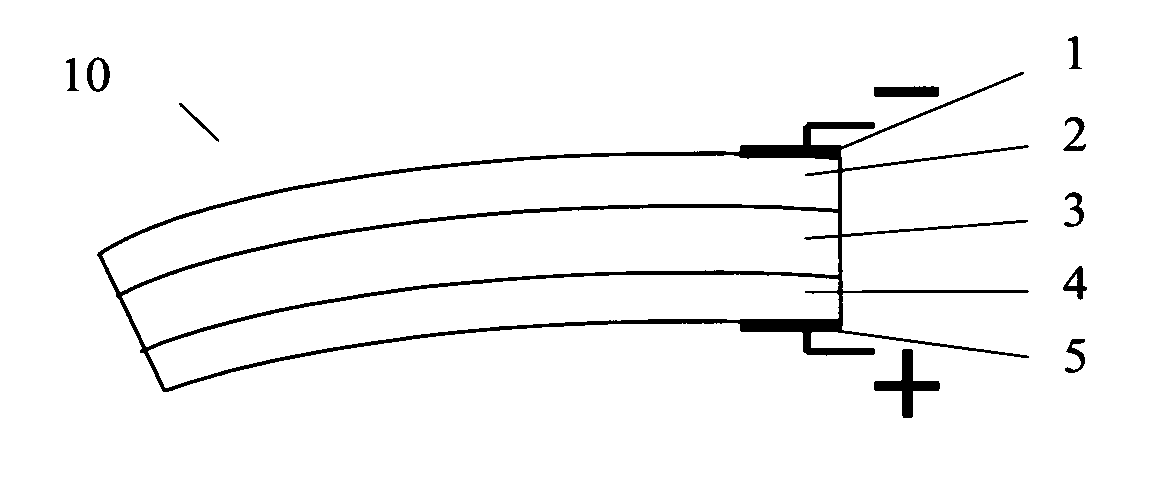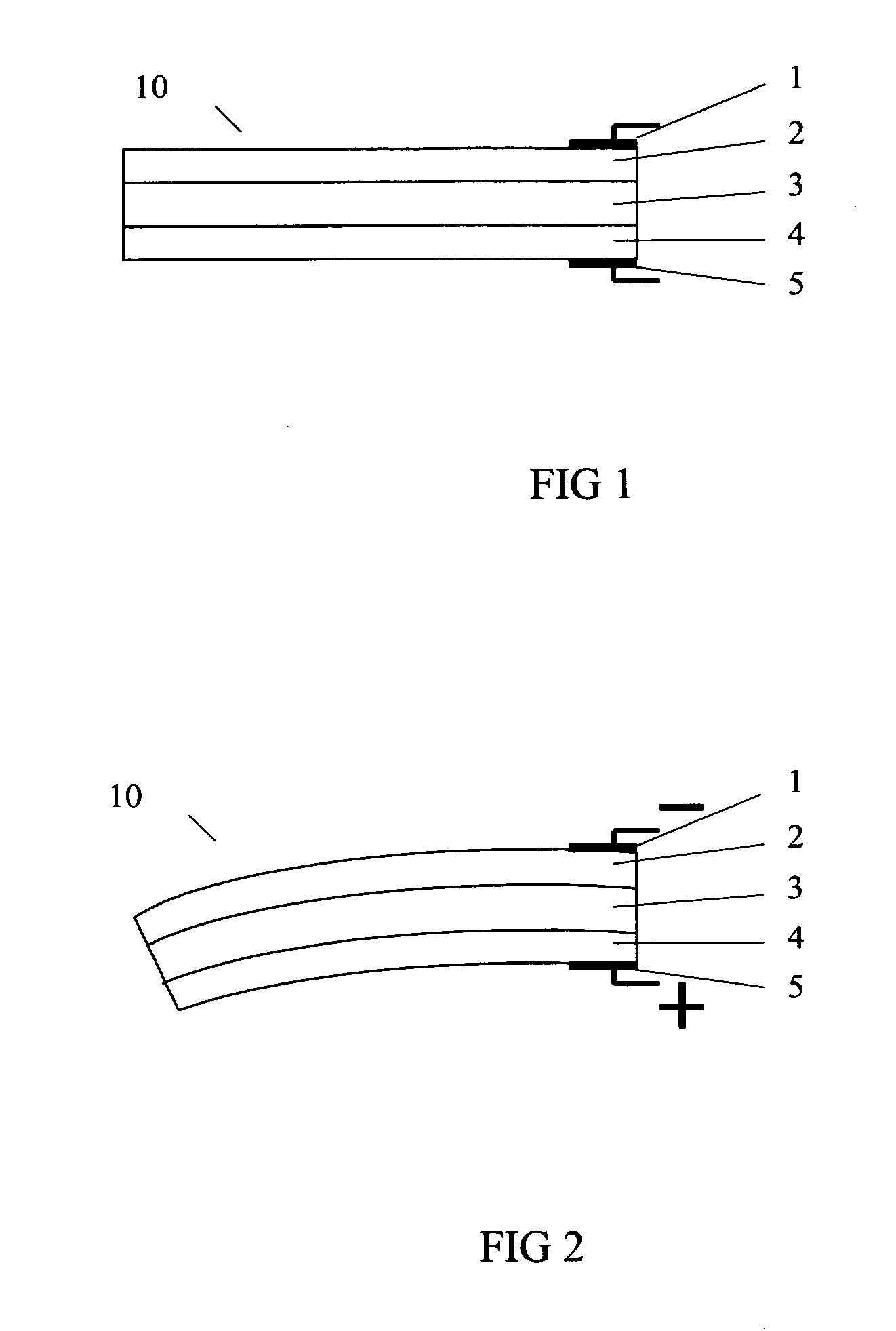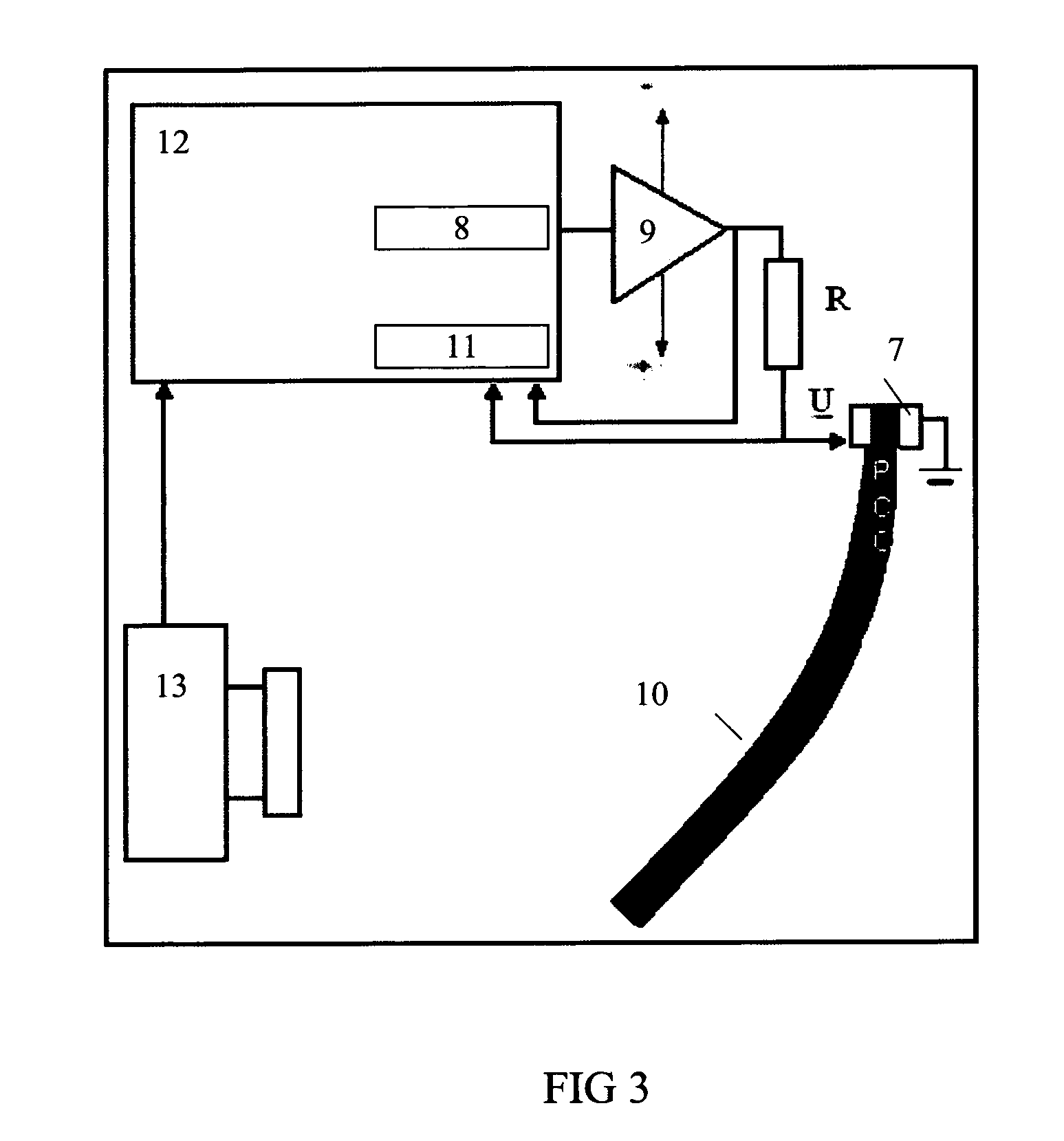Layered actuator
a technology of actuators and layers, applied in the direction of conductors, non-insulated conductors, electrical devices, etc., can solve the problems of insufficient control of carbon nanotube synthesis, inability to control carbon nanotube synthesis adequately, and inability to separate tubes with the required characteristics, etc., to achieve the effect of improving the conductivity of the electrode layer
- Summary
- Abstract
- Description
- Claims
- Application Information
AI Technical Summary
Benefits of technology
Problems solved by technology
Method used
Image
Examples
example 1
[0019]Example 1 describes how to make the composite material containing carbide-derived carbon.
[0020]In this example, the nanoporous CDC, which had been synthesised from titanium carbide at 800° C. from Carbon Nanotech was used as the conductive component of the electrode. Polyvinylidene fluoride-hexafluoropropylene (PVdF-HFP) from Sigma Aldrich was used as a binding material and it was dissolved using N,N-dimethylacetamide (DMAc) as a solvent. 1-ethyl-3-methylimidazolium tetrafluorobroate (EMIBF4) was used as an ionic liquid.
[0021](a) Making Electrodes
[0022]The electrodes described in the example contain PVdF-HFP 35%, EMIBF4 35% and CDC 30% by weight.
[0023]To make the electrodes, 0.1 g of PVdF-HFP was dissolved in 1.5 ml of DMAc. An amount of carbide-derived carbon and an amount of ionic liquid (EMIBF4), which were appropriate for the amount of polymer, were taken, 0.5 ml of DMAc was added and the resulting mixture was processed in an ultrasound bath for 25 minutes. Then, the polym...
example 2
[0028]The actuator has been prepared as described in example 1, but the electrodes contain PVdF-HFP 32%, CDC 20% and EMIBF4 48% by weight.
example 3
[0029]The actuator has been prepared as described in example 1, but the electrodes contain PVdF-HFP 32%, CDC 10%, organic-activated carbon 10% and EMIBF4 48% by weight. The organic-activated carbon is added to improve the conductivity of the electrodes and it is derived through pyrolysis of a carbon-rich material, e.g. nutshells or wood, and the following activation, or through impregnation of a carbon-rich material with a strong acid, base or salt and the subsequent carbonisation.
PUM
| Property | Measurement | Unit |
|---|---|---|
| pore size | aaaaa | aaaaa |
| pore size | aaaaa | aaaaa |
| force | aaaaa | aaaaa |
Abstract
Description
Claims
Application Information
 Login to View More
Login to View More - R&D
- Intellectual Property
- Life Sciences
- Materials
- Tech Scout
- Unparalleled Data Quality
- Higher Quality Content
- 60% Fewer Hallucinations
Browse by: Latest US Patents, China's latest patents, Technical Efficacy Thesaurus, Application Domain, Technology Topic, Popular Technical Reports.
© 2025 PatSnap. All rights reserved.Legal|Privacy policy|Modern Slavery Act Transparency Statement|Sitemap|About US| Contact US: help@patsnap.com



